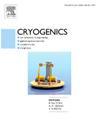Numerical investigation on evaluation of leakage and explosion overpressure at liquid hydrogen receiving terminal
IF 2.1
3区 工程技术
Q3 PHYSICS, APPLIED
引用次数: 0
Abstract
Liquid hydrogen receiving terminal (LHRT) is exposed to great hydrogen-leakage threat due to the frequent operation and complex components. The evaluation of the consequences resulting from a potential liquid hydrogen (LH2) leakage is therefore essential. Numerical simulation of LH2 leakage based on a pseudo-source model was conducted at the operational Kobe LHRT in Japan. The consequences of leakage duration and rate under the current station structure were assessed in terms of both dispersion and explosive overpressure hazards. The results show that considering the prevailing northerly winds in the city of Kobe, leakage from a downwind jet was expected to produce the most serious hazard, with the hazard of leakage and the risk of explosion overpressure increasing sharply in the first 100 s after leakage and stabilising thereafter. It is also discovered that leakage rate has a bigger influence on accidents than leakage duration. Furthermore, the global maximum explosion pressure exceeds 0.3447 bar. The administrative buildings will be substantially affected if the leaking diameter exceeds 15 mm and the duration exceeds 100 s.
液氢接收端泄漏和爆炸超压评定的数值研究
液氢接收终端运行频繁,部件复杂,存在较大的漏氢威胁。因此,对潜在液氢(LH2)泄漏造成的后果进行评估是必不可少的。基于伪源模型对日本神户LHRT运行中的LH2泄漏进行了数值模拟。从分散和爆炸超压危害两方面评估了当前电站结构下泄漏持续时间和泄漏速率的后果。结果表明:考虑到神户市盛行的北风,下风射流泄漏产生的危害最为严重,泄漏危险性和爆炸超压危险性在泄漏后的前100 s急剧增加,之后趋于稳定;研究还发现,泄漏率对事故的影响大于泄漏时间。整体最大爆炸压力超过0.3447 bar。如果泄漏直径超过15毫米,持续时间超过100秒,行政大楼将受到严重影响。
本文章由计算机程序翻译,如有差异,请以英文原文为准。
求助全文
约1分钟内获得全文
求助全文
来源期刊

Cryogenics
物理-热力学
CiteScore
3.80
自引率
9.50%
发文量
0
审稿时长
2.1 months
期刊介绍:
Cryogenics is the world''s leading journal focusing on all aspects of cryoengineering and cryogenics. Papers published in Cryogenics cover a wide variety of subjects in low temperature engineering and research. Among the areas covered are:
- Applications of superconductivity: magnets, electronics, devices
- Superconductors and their properties
- Properties of materials: metals, alloys, composites, polymers, insulations
- New applications of cryogenic technology to processes, devices, machinery
- Refrigeration and liquefaction technology
- Thermodynamics
- Fluid properties and fluid mechanics
- Heat transfer
- Thermometry and measurement science
- Cryogenics in medicine
- Cryoelectronics
 求助内容:
求助内容: 应助结果提醒方式:
应助结果提醒方式:


